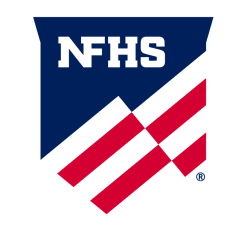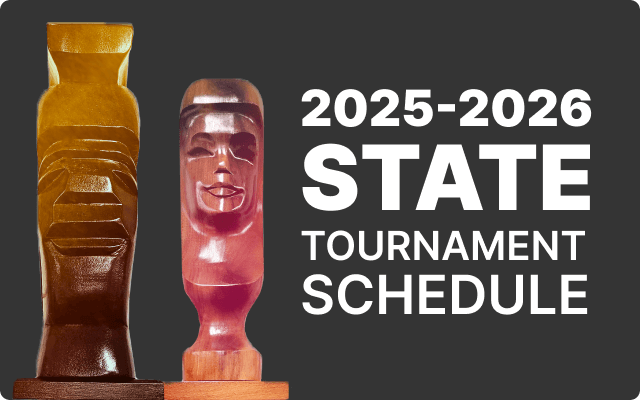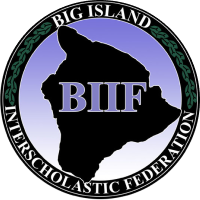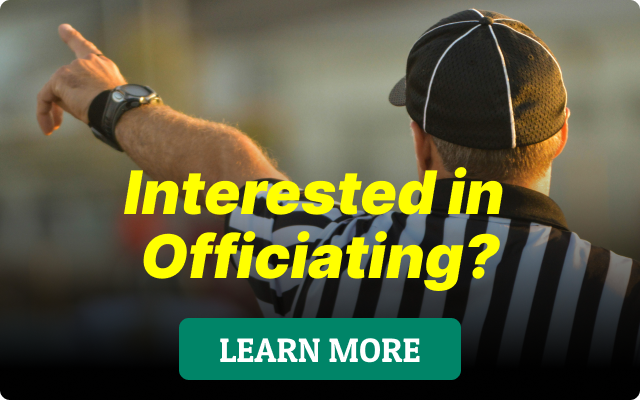INDIANAPOLIS, IN (March 20, 2023) – Two major rules changes for the 2023-24 high school spirit season involve released inversions and tosses to stunts to clarify rules for consistency.
Continued efforts to promote skill development and minimize risk led to eight total rules changes recommended by the NFHS Spirit Rules Committee at its February 13-14 meeting in Orlando, Florida. All recommended changes were approved by the NFHS Board of Directors.
Several rules regarding released inversions with various twisting limitations were consolidated into Rule 3-3-6a. As a result, every usage of a “half turn” was changed to a “one twist” to allow for consistency. This revision establishes the same twisting allowance for each type of landing. Previously, there were full twist-, half- and quarter-turn landings.
“Consolidating each landing to one twist considers sensible anatomic body movement to create a safer twisting motion,” said James Weaver, NFHS director of performing arts and sports and liaison to the Spirit Rules Committee. “The committee ensures that any skill changes are accompanied with appropriate skill progressions.”
A change in Rule 3-5-4 alters stunt terminology from a “vertical” stunt to a “non-inverted” stunt. “This is a change, because we didn’t allow for horizontal catching in the past, and this is going to allow that,” Weaver said. The Rule 3-5-4 change allows a toss to be caught in a horizontal or vertical stunt by the original bases while clarifying that only a ball-up position is allowed during the release of a toss caught in a non-inverted stunt. The height of the toss cannot significantly exceed the height of the bases’ hands during the release, which remains consistent with past rules.
In Rule 1-Definitions, the Spirit Rules Committee determined that some non-pyramid stunts, including Diamond Heads and Whirlybirds, are subject to the same restrictions dealing with hanging Stunts. The term “hanging pyramid” was changed to “hanging stunt” to include broader skills that need the same restrictions. This edit was deemed necessary to prohibit people from working around restrictions.
In Rule 3-3-5d, the committee determined that during braced flips, non-arm bracer(s) must be at prep level or below. In a prep or shoulder stand, the bracer(s) shall have two bases or a base and spotter. This change clarifies the requirement for a bracer that does not have hand-to-hand contact with the top person.
The committee agreed that as the inversion rule has evolved and the connection between the top person and the bracer has changed from two arms to one arm, there is a need for further clarification for bracers who do not have hand-to-hand contact with the flipping top person, according to Weaver.
Rule 3-5-6 regarding the helicopter was altered to decrease the number of tossers/catchers from four to three, which brings the personnel requirement in line with similar skills that already use three tossers/catchers. The committee noted it shall be easier for players to learn skill progressions and fill the base requirements. Helicopters will continue to require a tosser/catcher to be in position to support the top person’s head and shoulders at the beginning and end of the skill.
Changes in Rule 4-3-6b, which also affect Rule 3-6-3b, edits allow for a wider range of below-prep level inversions to be performed legally, mirroring the language in prep level inversions. This also aligns cheerleading with a 2018 dance rule.
Revisions to Rule 4-4-4a allow dance to adopt a cheer skill that has been effective. The term “and does not pass through an extended position” was deleted in part b. referring to at least two catchers and/or bases catch the upper body of the top person. Part d. was added to establish that when the catchers are not the original bases and the top person begins or passes through an extended overhead position, three catchers are in place.
“The committee continues its emphasis on risk minimization while at the same time looking to open up opportunities for young people to do more skills and do it in a way that is without risk,” said Shawn Knight, assistant director of the Virginia High School League and chair of the NFHS Spirit Rules Committee. “We’re really excited about the rules changes that we’ve had this year and really excited about where we are with the Spirit Rules Book. It’s a tremendous opportunity for young people to express their creativity through Spirit activities and we’re really excited about the continuation of this work.”
A complete listing of the spirit rules changes will be available on the NFHS website at
www.nfhs.org. Click on “Activities & Sports” at the top of the home page and select “Spirit.”
According to the 2021-22 NFHS High School Athletics Participation Survey, competitive spirit ranks ninth in participation for girls with 140,552 participants in 7,236 schools.










